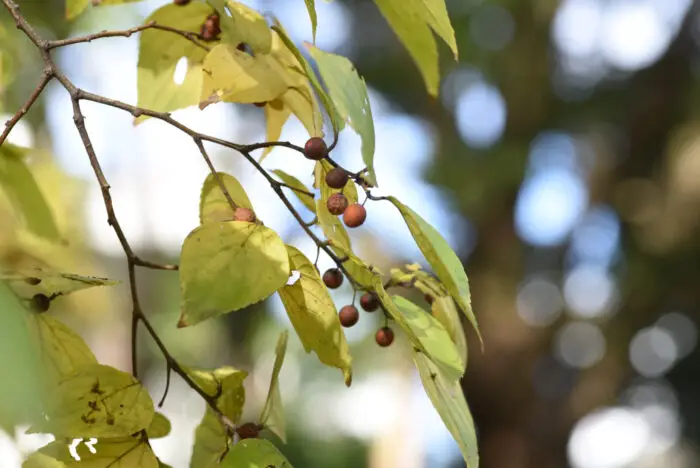The Hackberry Tree, which is a close relative of the American Elm, is a deciduous hardwood that is a popular ornamental shade tree in urban environments in some parts of the United States. People use hackberry wood in furniture making. It is especially popular for its use in items that require steam bending. There are 66 different species of Hackberry trees worldwide, with 7 of these residing in North America. All of the 7 North American hackberry species have edible berry-like fruit. In fact, Native Americans have been using hackberries for food for hundreds of years.
These trees first bloom with flowers and then small berries that are red or dark purple. However, the term berry is a bit of a misnomer; hackberry fruits are actually drupes. A drupe consists of a thick skin with fruit on the inside and a single brown seed. Other examples of drupes include cherries, peaches, apricots, and plums.
While the name is a bit of a misnomer, they are still an enjoyable and edible fruit. In fact, these berries have a long and interesting history of being used as a food source and serving medicinal purposes.
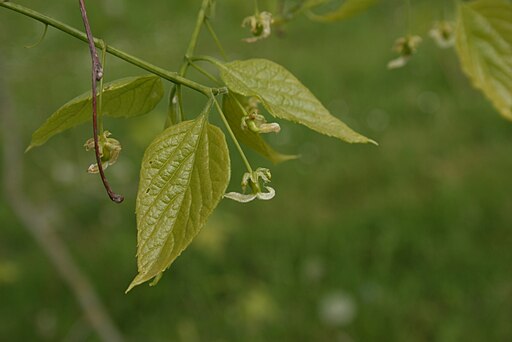
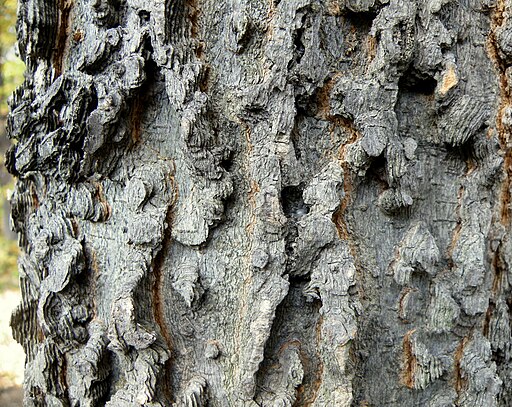
A Closer Look At The Hackberry Tree
Before embarking on a hackberry foraging expedition, it is essential to familiarize yourself with the tree’s distinctive features.
Hackberries are deciduous trees that can reach heights of 40 to 60 feet. They have a rounded crown with an irregular shape, and their bark showcases corky ridges.
Hackberry leaves are alternate, simple, and ovate or elliptical in shape. They have serrated edges and prominent veins. The leaves are usually dark green in color, but they may exhibit a yellowish hue in the fall.
The leaves grow in the early spring. The trees bloom with green flowers in the late spring. You’ll see female flowers on their own or growing in pairs from the leaf axils; these greenish flowers are more rounded than the male flowers. The male flowers are longer and have a fuzzier style about them.
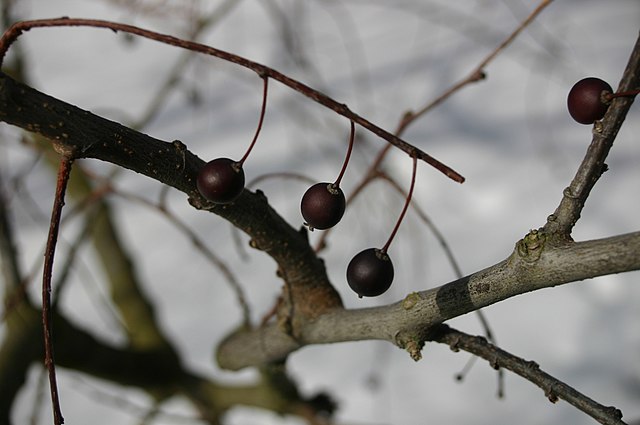
What Parts Of Hackberries Do You Eat?
Hackberry fruit is, of course, edible and nutritious. However, people also consume the seeds, the bark, and the leaves.
The bark has been used for medicinal purposes, which we’ll get into more below.
According to Samuel Thayer, who is the author of Nature’s Garden, hackberry leaves are also marginally edible.
There are three main approaches to consuming hackberries.
One is to simply eat the flesh of the fruit. The berries are small, nearly pea-sized berries, and the hackberry seeds take up much of their volume. Still, you can simply eat the flesh of the fruit like you would a cherry.
Alternatively, people collect a single hard seed, grind it up, mix it with water, and make hackberry milk. This is similar to other nut milk, like almond milk or cashew milk.
Another option is to collect the fruits and grind them without separating the hackberry seeds. Then the flesh of the fruit and the seeds create a paste. Historically, Native Americans would use this method and make a nutrient-rich snack by roasting the paste. Today, people more commonly bake the paste into cookies.

North American Species of Hackberry
- Southern Hackberry (Celtis laevigata), simply goes by other names such as Sugarberry tree, Netleaf hackberry, Mississippi hackberry, and Sugar hackberry. It’s most commonly found in Missouri and Georgia, though it’s not uncommon to find it anywhere in the southern United States. The Southern hackberry plants itself in moist soil. It likes to grow near a good water source.
- Northern Hackberry (Celtis occidentalis) has earned many monikers, including Nettletree, American Hackberry, Common Hackberry, False Elm, and Beaver wood. It grows in the northern states of the midwest and the northeast states, with a much larger native range than its southern counterpart. They’re fairly popular and may grow as a street tree in urban landscapes. If you’re trying to plant your own common hackberry, they love to be planted in the full sun, though they can make do with partial shade. The Northern Hackberry will go ahead and grow in rocky locations, places where you wouldn’t think tree roots would love to take hold.
- Lindheimer’s hackberry (Celtis lindheimeri) also goes by White Tree. This hackberry tree is usually found in areas of central Texas and northeastern Mexico. It has a height averaging 25 ft and produces a reddish-brown berry. This species is closely related to the netleaf hackberry.
- Desert hackberry (Celtis pallida), also goes by other names like Spiny Hackberry and Nettle Tree. This species is native to Arizona, Florida, New Mexico, and Texas. It thrives in dry locations such as brushlands, canyons, deserts, and mesas. The Desert Hackberry is a small tree that grows up to 10 feet tall. Desert hackberry fruit is yellow, orange, or red.
- Dwarf hackberry (Celtis tenuifolia), also known as Georgia Hackberry, is native to the eastern United States but is very rare north of the Ohio River. It grows anywhere from 6 1/2 – 39 feet. The Dwarf hackberry is a slow-growing, drought-tolerant, and shade-intolerant tree that grows in dry upland habitats, which include sandy and woodland areas.
- Netleaf hackberry (Celtis reticulata), goes by other names like Western Hackberry, Douglas Hackberry, Netleaf Sugar Hackberry, and Palo Blanco. This is a small to medium-sized tree native to western North America. It is often a stunted, scraggly bush. But they are known to grow up to 70 ft tall. They grow at altitudes of (1,600–5,600 ft).

Hackberry Nipple Gall
Hackberry nipple gall, also known as hackberry nipple gall psyllid, is a unique plant deformity caused by the interaction between hackberry trees (Celtis spp.) and a tiny insect called Pachypsylla celtidismamma. This fascinating phenomenon occurs when the psyllid lays its eggs on the leaves of hackberry trees during spring.
The developing larvae secrete chemicals that manipulate the tree’s growth hormones, resulting in the formation of peculiar nipple-like galls. These galls, which can vary in size from a few millimeters to several centimeters, protrude from the leaf’s surface and provide a protective habitat for the developing psyllid nymphs.
Hackberry nipple galls typically appear as green or reddish structures resembling small pimples or berries. Despite their unusual appearance, they are harmless to both the tree and humans, acting as an evolutionary strategy for the psyllids’ survival.
These galls persist throughout the late summer, eventually releasing mature psyllids that continue their life cycle. While hackberry nipple gall infestations may cause concern for some tree enthusiasts, they are ultimately a natural and intriguing example of the intricate relationships between insects and plants in the ecosystem
Hackberry Trees With a Powdery Mildew
If you notice powdery mildew on the leaves, the hackberry tree may have a problem. This, along with mites, often cause contorted twig clusters called witches broom. The mildew is Sphaerotheca phytophila. The solution is to remove the tree once it becomes too unsightly.
The Best Time To Forage For Hackberries
To successfully forage hackberries, it is crucial to time your expedition during the peak season when the berries are ripe and abundant. The ripening period generally occurs in late summer or early fall. Keep an eye out for the telltale signs of ripeness, such as the darkening of the berries’ color and their slightly soft texture.
Note that hackberries can sometimes survive through the winter and into the spring. They’re a popular food with wildlife, though, so it’s rare to be this lucky.
As mentioned earlier, hackberries are small. They also grow very high up in the trees. This can make it difficult to forage for hackberries successfully.
In the winter, when the trees have lost their leaves, it’s a little easier to see the fruit, assuming it’s still there. This can make it easier to knock the fruit off the tree, see them in the snow, and collect them.
A Note Of Caution When Harvesting Hackberries
Hackberries are reddish or purple. There are many different berries out there that are dangerous to eat, and many of them are red in color. It’s extremely important that you correctly identify the hackberry tree before you decide to eat the fruit.
Use at least two sources that you trust when identifying the tree and its fruit. Take a close look at the bark, which is fairly distinct, the leaves, and the fruit. This will help you be more confident in your verdict.
It is also always a good practice as a forager to go ahead and learn all the dangerous plants that grow in your area. By practicing identifying what’s dangerous, you’ll be more accurate when identifying what’s safely edible.
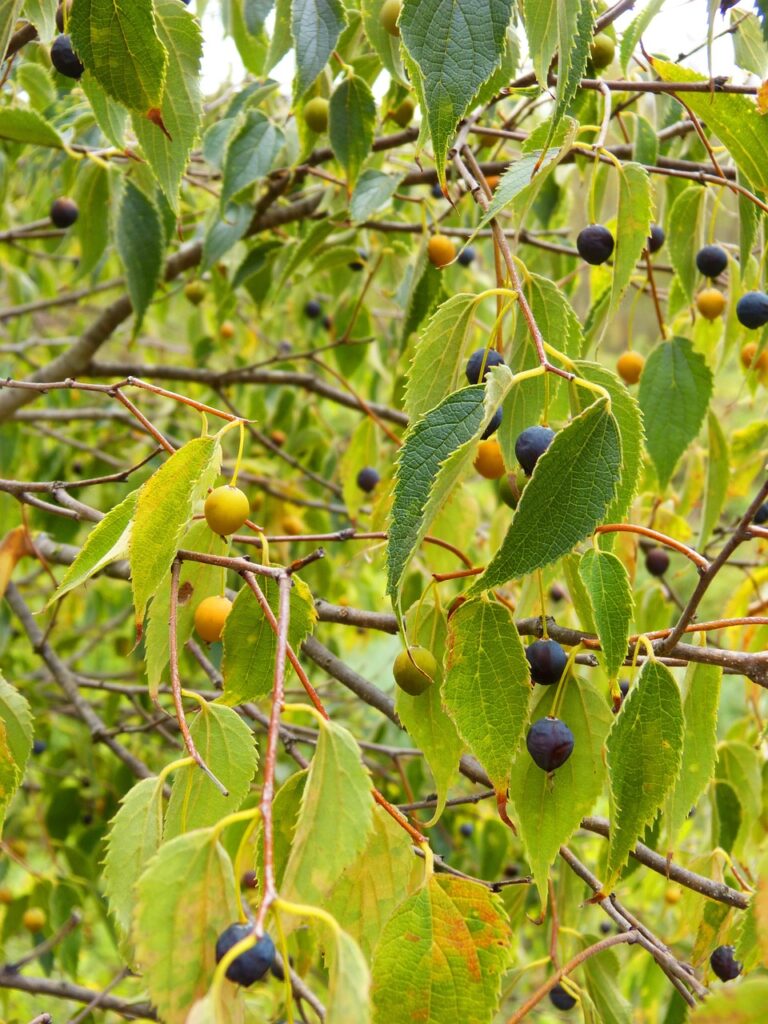
Eating Hackberries
Hackberries have a long history of both culinary and medicinal use. Their taste varies quite a bit from tree to tree. If you find a tree you love, you’ll want to remember it and come back again and again. In general, the sweet fruit has a bit of crunch to it, and has a nutty flavor.
You can eat fresh hackberries. All you need to do is wash them. This is a great little snack while you’re hiking on a trail.
They can be added to cereal or a smoothie.
They can be made into jams or baked into desserts.
Medicinal Uses Of Hackberries
Native American Tribes used hackberries as a food source. They also used the fruit in ceremonies and for medicinal purposes.
Historically, Native Americans used hackberry bark to treat venereal diseases. They also used the bark to regulate menstrual cycles and to induce abortions. The bark was also used to treat sore throats.
Foraging For Edible Hackberries Is A Delightful Journey
Armed with knowledge about their appearance, foraging techniques, and potential uses, you can embark on an enriching experience of discovering and savoring these versatile fruits. Remember to practice ethical and safe foraging techniques and to appreciate the wonders of hackberries as you find them out in nature.
Recent Posts
The only venomous snakes in Washington State are Northern Pacific Rattlesnakes. The Northern Pacific Rattlesnake (Crotalus oreganus oreganus) is a sub-species of the Western Rattlesnake. Anyone...
Skunks are not classified as true hibernators. But they go into a state of torpor when the weather gets cold. Skunks are light sleep hibernators, along with opossums, bears, and raccoons. ...

